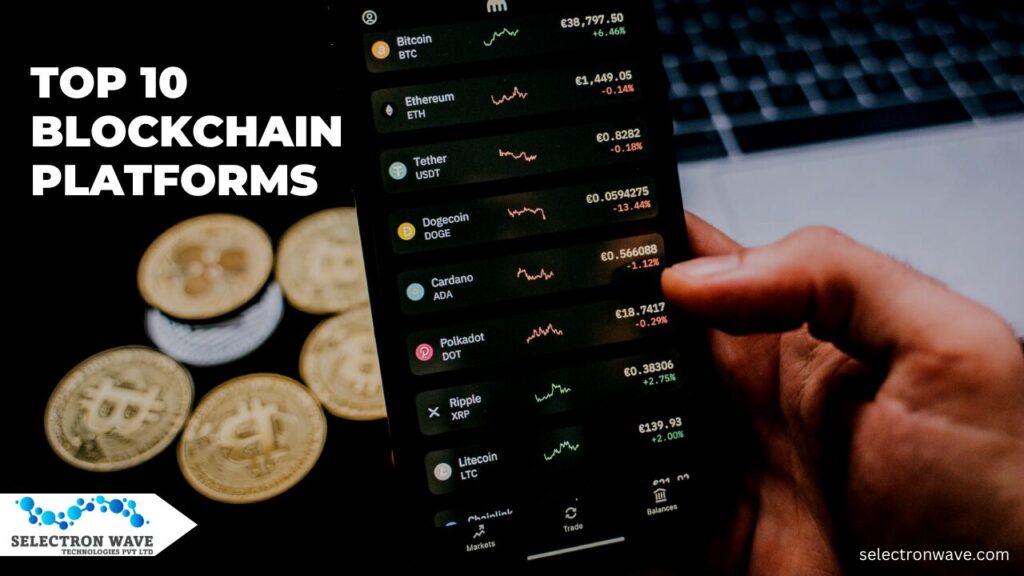Top 10 Blockchain Platforms
Blockchain technology has rapidly evolved from its early days as the backbone of cryptocurrencies to a versatile tool with applications in various industries. With numerous blockchain platforms available today, each with unique features and use cases, it’s essential to understand the top players in the field. Here’s a look at the top 10 blockchain platforms in 2024 that are shaping the future of decentralized applications (dApps), smart contracts, and digital assets.
1. Ethereum
Ethereum remains the most popular blockchain platform, known for pioneering the concept of smart contracts. With the Ethereum 2.0 upgrade, the platform has shifted from a proof-of-work (PoW) to a proof-of-stake (PoS) consensus mechanism, significantly improving scalability, energy efficiency, and transaction speeds. Ethereum continues to be the go-to platform for developers building decentralized applications and launching new tokens.
2. Binance Smart Chain (BSC)
Binance Smart Chain has quickly gained traction due to its low transaction fees and fast processing times. It runs parallel to Binance Chain and supports smart contracts, making it a strong competitor to Ethereum. BSC’s compatibility with the Ethereum Virtual Machine (EVM) allows developers to easily port their dApps from Ethereum, contributing to its growing ecosystem.
3. Cardano
Cardano is a third-generation blockchain platform that emphasizes sustainability, scalability, and interoperability. Its unique two-layer architecture separates the ledger of value from the computational layer, improving security and flexibility. Cardano’s proof-of-stake consensus, Ouroboros, is one of the first provably secure protocols of its kind, making it a popular choice for applications requiring high security and efficiency.
4. Solana
Solana is known for its ultra-fast transaction speeds and low fees, making it ideal for high-throughput applications such as decentralized finance (DeFi) and gaming. The platform uses a unique proof-of-history (PoH) consensus combined with proof-of-stake, allowing it to process thousands of transactions per second. Solana’s scalability and efficiency have led to its rapid adoption and a growing ecosystem of dApps.
5. Polkadot
Polkadot aims to enable different blockchains to interoperate, allowing them to share information and functionality. Its unique multi-chain architecture, known as parachains, allows for parallel processing of transactions, enhancing scalability. Polkadot’s robust governance model and its ability to connect to both public and private chains make it a versatile platform for various use cases.

6. Avalanche
Avalanche is a highly scalable blockchain platform that supports custom blockchain networks and decentralized applications. Its consensus protocol, Avalanche, allows for high throughput and near-instant finality, making it an attractive option for developers. Avalanche’s ability to support multiple virtual machines and its interoperability with Ethereum have made it a popular choice for DeFi projects.
7. Tezos
Tezos is a self-amending blockchain that allows stakeholders to vote on protocol upgrades without the need for a hard fork. This feature ensures that the network can evolve smoothly over time. Tezos uses a liquid proof-of-stake (LPoS) consensus mechanism, which is energy-efficient and secure. Its focus on governance and security makes it a preferred platform for applications that require stability and reliability.
8. Algorand
Algorand is designed to be a highly scalable and secure blockchain platform. It uses a pure proof-of-stake (PPoS) consensus mechanism, which allows for fast and efficient transaction processing. Algorand’s ability to handle large volumes of transactions with low latency makes it suitable for a wide range of applications, from DeFi to supply chain management.
9. EOS
EOS is known for its high-performance blockchain architecture, which is capable of processing millions of transactions per second with minimal fees. Its delegated proof-of-stake (DPoS) consensus mechanism allows for quick transaction confirmations and scalability. EOS’s flexibility and developer-friendly environment have made it a popular platform for building dApps and launching ICOs.
10. Hedera Hashgraph
Hedera Hashgraph is a distributed ledger platform that offers high throughput, low latency, and security through its unique consensus algorithm, known as Hashgraph. Unlike traditional blockchains, Hedera does not use a blockchain structure but instead uses a directed acyclic graph (DAG). This allows for faster transaction processing and greater scalability, making it suitable for enterprise-level applications.
Conclusion
As blockchain technology continues to evolve, the competition among platforms is intensifying. Each of these top 10 blockchain platforms offers unique features and advantages, catering to different use cases and industries. Whether you’re a developer looking to build the next big dApp, a business exploring blockchain solutions, or an investor considering where to place your bets, understanding these platforms will be crucial in navigating the blockchain landscape of 2024.
Are you interested in learning more about Blockchain?
Get in touch with us today.




